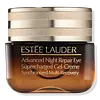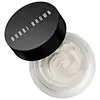What's inside
What's inside
 Key Ingredients
Key Ingredients

 Benefits
Benefits

 Concerns
Concerns

 Ingredients Side-by-side
Ingredients Side-by-side

Water
Skin ConditioningDimethicone
EmollientMethyl Trimethicone
Skin ConditioningBifida Ferment Lysate
Skin ConditioningDimethicone/Vinyl Dimethicone Crosspolymer
Skin ConditioningPropanediol
SolventPetrolatum
EmollientSucrose
HumectantGlycerin
HumectantButylene Glycol
HumectantAcrylamide/Sodium Acryloyldimethyltaurate Copolymer
Emulsion StabilisingTrehalose
HumectantTripeptide-32
Skin ConditioningAdansonia Digitata Seed Extract
Skin ConditioningLavandula Angustifolia Flower Extract
CleansingSodium Hyaluronate
HumectantLactobacillus Ferment
Skin ConditioningTocopheryl Acetate
AntioxidantYeast Extract
Skin ConditioningHypnea Musciformis Extract
Skin ProtectingSodium Rna
Skin ConditioningCaffeine
Skin ConditioningSqualane
EmollientAnthemis Nobilis Flower Oil
MaskingPoria Cocos Sclerotium Extract
AstringentCitrullus Lanatus Fruit Extract
Skin ConditioningLens Esculenta Fruit Extract
Skin ConditioningPyrus Malus Fruit Extract
Skin ConditioningEthylhexylglycerin
Skin ConditioningSodium PCA
HumectantPhytosphingosine
Skin ConditioningHydrolyzed Algin
Hordeum Distichon Extract
Skin ProtectingJojoba Esters
EmollientTriticum Vulgare Germ Oil
EmollientHydrogenated Lecithin
EmulsifyingLecithin
EmollientIsohexadecane
EmollientJojoba Alcohol
EmollientIsopropyl Jojobate
EmollientPEG/PPG-18/18 Dimethicone
EmulsifyingPolysorbate 80
EmulsifyingAcrylates/C10-30 Alkyl Acrylate Crosspolymer
Emulsion StabilisingTromethamine
BufferingSorbitan Oleate
EmulsifyingSodium Lactate
BufferingPolysorbate 40
EmulsifyingPotassium Gluconate
Skin ProtectingTocopherol
AntioxidantBHT
AntioxidantPhenoxyethanol
PreservativePotassium Sorbate
PreservativeSodium Benzoate
MaskingCI 77491
Cosmetic ColorantCI 77492
Cosmetic ColorantWater, Dimethicone, Methyl Trimethicone, Bifida Ferment Lysate, Dimethicone/Vinyl Dimethicone Crosspolymer, Propanediol, Petrolatum, Sucrose, Glycerin, Butylene Glycol, Acrylamide/Sodium Acryloyldimethyltaurate Copolymer, Trehalose, Tripeptide-32, Adansonia Digitata Seed Extract, Lavandula Angustifolia Flower Extract, Sodium Hyaluronate, Lactobacillus Ferment, Tocopheryl Acetate, Yeast Extract, Hypnea Musciformis Extract, Sodium Rna, Caffeine, Squalane, Anthemis Nobilis Flower Oil, Poria Cocos Sclerotium Extract, Citrullus Lanatus Fruit Extract, Lens Esculenta Fruit Extract, Pyrus Malus Fruit Extract, Ethylhexylglycerin, Sodium PCA, Phytosphingosine, Hydrolyzed Algin, Hordeum Distichon Extract, Jojoba Esters, Triticum Vulgare Germ Oil, Hydrogenated Lecithin, Lecithin, Isohexadecane, Jojoba Alcohol, Isopropyl Jojobate, PEG/PPG-18/18 Dimethicone, Polysorbate 80, Acrylates/C10-30 Alkyl Acrylate Crosspolymer, Tromethamine, Sorbitan Oleate, Sodium Lactate, Polysorbate 40, Potassium Gluconate, Tocopherol, BHT, Phenoxyethanol, Potassium Sorbate, Sodium Benzoate, CI 77491, CI 77492
Water
Skin ConditioningPetrolatum
EmollientDimethicone
EmollientButyrospermum Parkii Butter
Skin ConditioningGlycerin
HumectantButylene Glycol
HumectantCeresin
Emulsion StabilisingPhenyl Trimethicone
Skin ConditioningLauryl PEG-9 Polydimethylsiloxyethyl Dimethicone
Skin ConditioningLanolin Alcohol
EmollientSorbitol
HumectantSodium Hyaluronate
HumectantScutellaria Baicalensis Root Extract
AstringentMorus Bombycis Root Extract
Skin ConditioningAscophyllum Nodosum Extract
Skin ConditioningAsparagopsis Armata Extract
Skin ProtectingCamellia Sinensis Leaf Extract
AntimicrobialOlea Europaea Fruit Extract
BleachingSalvia Sclarea Extract
AntiseborrhoeicPyrus Malus Fruit Extract
Skin ConditioningAcetyl Hexapeptide-8
HumectantLimnanthes Alba Seed Oil
Skin ConditioningOenothera Biennis Oil
EmollientTocopheryl Acetate
AntioxidantAcetyl Glucosamine
Skin ConditioningLinoleic Acid
CleansingCaffeine
Skin ConditioningMicrococcus Lysate
Skin ConditioningDi-C12-15 Alkyl Fumarate
EmollientVitis Vinifera Seed Oil
EmollientTriticum Vulgare Bran Extract
Skin ConditioningTrehalose
HumectantCholesterol
EmollientPinanediol
Skin ConditioningCamphanediol
Skin ConditioningSucrose
HumectantStearic Acid
CleansingPalmitic Acid
EmollientLecithin
EmollientPotassium Hydroxide
BufferingSilica
AbrasivePentylene Glycol
Skin ConditioningPEG-30 Dipolyhydroxystearate
EmulsifyingSodium Chloride
MaskingHydroxystearic Acid
CleansingPEG-8 Distearate
EmulsifyingBehenyl Alcohol
EmollientParfum
MaskingBenzyl Salicylate
PerfumingSodium Sulfite
PreservativeSodium Metabisulfite
AntioxidantDisodium EDTA
Tetrasodium EDTA
Chlorphenesin
AntimicrobialPotassium Sorbate
PreservativePhenoxyethanol
PreservativeWater, Petrolatum, Dimethicone, Butyrospermum Parkii Butter, Glycerin, Butylene Glycol, Ceresin, Phenyl Trimethicone, Lauryl PEG-9 Polydimethylsiloxyethyl Dimethicone, Lanolin Alcohol, Sorbitol, Sodium Hyaluronate, Scutellaria Baicalensis Root Extract, Morus Bombycis Root Extract, Ascophyllum Nodosum Extract, Asparagopsis Armata Extract, Camellia Sinensis Leaf Extract, Olea Europaea Fruit Extract, Salvia Sclarea Extract, Pyrus Malus Fruit Extract, Acetyl Hexapeptide-8, Limnanthes Alba Seed Oil, Oenothera Biennis Oil, Tocopheryl Acetate, Acetyl Glucosamine, Linoleic Acid, Caffeine, Micrococcus Lysate, Di-C12-15 Alkyl Fumarate, Vitis Vinifera Seed Oil, Triticum Vulgare Bran Extract, Trehalose, Cholesterol, Pinanediol, Camphanediol, Sucrose, Stearic Acid, Palmitic Acid, Lecithin, Potassium Hydroxide, Silica, Pentylene Glycol, PEG-30 Dipolyhydroxystearate, Sodium Chloride, Hydroxystearic Acid, PEG-8 Distearate, Behenyl Alcohol, Parfum, Benzyl Salicylate, Sodium Sulfite, Sodium Metabisulfite, Disodium EDTA, Tetrasodium EDTA, Chlorphenesin, Potassium Sorbate, Phenoxyethanol
 Reviews
Reviews

Ingredients Explained
These ingredients are found in both products.
Ingredients higher up in an ingredient list are typically present in a larger amount.
Butylene Glycol (or BG) is used within cosmetic products for a few different reasons:
Overall, Butylene Glycol is a safe and well-rounded ingredient that works well with other ingredients.
Though this ingredient works well with most skin types, some people with sensitive skin may experience a reaction such as allergic rashes, closed comedones, or itchiness.
Learn more about Butylene GlycolCaffeine is most associated with coffee, tea, and cacao. In skincare, it helps with calming inflammation and is rich in antioxidants.
While caffeine is used to treat cellulite and and dark circles, further studies are needed to prove this. It has been believed to help with these skin conditions due to its ability to dilate blood vessels and increase blood flow.
Some studies are looking into caffeine's ability to protect against UV rays.
Learn more about CaffeineDimethicone is a type of synthetic silicone created from natural materials such as quartz.
What it does:
Dimethicone comes in different viscosities:
Depending on the viscosity, dimethicone has different properties.
Ingredients lists don't always show which type is used, so we recommend reaching out to the brand if you have questions about the viscosity.
This ingredient is unlikely to cause irritation because it does not get absorbed into skin. However, people with silicone allergies should be careful about using this ingredient.
Note: Dimethicone may contribute to pilling. This is because it is not oil or water soluble, so pilling may occur when layered with products. When mixed with heavy oils in a formula, the outcome is also quite greasy.
Learn more about DimethiconeGlycerin is already naturally found in your skin. It helps moisturize and protect your skin.
A study from 2016 found glycerin to be more effective as a humectant than AHAs and hyaluronic acid.
As a humectant, it helps the skin stay hydrated by pulling moisture to your skin. The low molecular weight of glycerin allows it to pull moisture into the deeper layers of your skin.
Hydrated skin improves your skin barrier; Your skin barrier helps protect against irritants and bacteria.
Glycerin has also been found to have antimicrobial and antiviral properties. Due to these properties, glycerin is often used in wound and burn treatments.
In cosmetics, glycerin is usually derived from plants such as soybean or palm. However, it can also be sourced from animals, such as tallow or animal fat.
This ingredient is organic, colorless, odorless, and non-toxic.
Glycerin is the name for this ingredient in American English. British English uses Glycerol/Glycerine.
Learn more about GlycerinLecithin is a term for a group of substances found in the cell membranes of plants, animals, and humans. They are made up of mixture of phospholipids.
This ingredient has emollient and emulsifying properties.
As an emollient, lecithen helps soften the skin and creates a barrier to keep moisture in.
As an emulsifier, it also helps prevent water and oil ingredients from separating. Lecithin can also help ingredients be better absorbed by the skin.
This is because the phospholipids in lecithin produce liposomes. Liposomes help other ingredients get through the skin barrier.
Depending on the source of this ingredient, lecithin may not be fungal acne safe. This is because some sources of lecithin come from soybean oil, which may feed the malassezia yeast that feeds fungal acne.
We recommend reaching out to the brand you are purchasing from to inquire about the source of their lecithin.
Some other names for this ingredient include soy lecithin and deoiled soy lecithin.
Learn more about LecithinPetrolatum is more commonly known as petroleum jelly. It is created by mixing waxes and mineral oils.
This ingredient is effective at reducing water loss by 99%. This is because it is an occlusive. Occlusives create a hydrophobic barrier on the skin to prevent evaporation. This property makes it great for hydrating dry skin.
Pro tip: Use occlusives, such as this ingredient, on damp skin for the best results.
The quality or origin of petrolatum is only known when disclosed by the brand. Most cosmetic petrolatum has gone through several purification stages.
Another benefit of occlusives is it protects your skin against infection or allergies.
Petrolatum may not be safe for fungal-acne. Studies show mineral oil / petroleum leads to the growth of M. Furfur, a type of yeast.
Learn more about PetrolatumPhenoxyethanol is a preservative that has germicide, antimicrobial, and aromatic properties. Studies show that phenoxyethanol can prevent microbial growth. By itself, it has a scent that is similar to that of a rose.
It's often used in formulations along with Caprylyl Glycol to preserve the shelf life of products.
Potassium Sorbate is a preservative used to prevent yeast and mold in products. It is commonly found in both cosmetic and food products.
This ingredient comes from potassium salt derived from sorbic acid. Sorbic acid is a natural antibiotic and effective against fungus.
Both potassium sorbate and sorbic acid can be found in baked goods, cheeses, dried meats, dried fruit, ice cream, pickles, wine, yogurt, and more.
You'll often find this ingredient used with other preservatives.
Learn more about Potassium SorbatePyrus Malus Fruit Extract is extract from Apples. Apples are rich in Vitamin C, sugars, and antioxidants.
The sugar in Apples are humectants and help hydrate the skin. On top of that, apples also contain some acids, such as malic acid. These acids may have a mild exfoliating effect.
Last, the phytochemicals found in apples are strong antioxidants. These antioxidants help with anti-aging as they protect your skin cells against oxidative damage.
Learn more about Pyrus Malus Fruit ExtractSodium Hyaluronate is hyaluronic acid's salt form. It is commonly derived from the sodium salt of hyaluronic acid.
Like hyaluronic acid, it is great at holding water and acts as a humectant. This makes it a great skin hydrating ingredient.
Sodium Hyaluronate is naturally occurring in our bodies and is mostly found in eye fluid and joints.
These are some other common types of Hyaluronic Acid:
Learn more about Sodium HyaluronateSucrose is a natural sugar found in fruits, vegetables, and nuts. It is the main constituent of white sugar.
In skincare, sucrose is a humectant and can be a mild exfoliant.
Sucrose is hydrophilic, meaning it attracts water. This makes it an effective humectant and helps hydrate the skin.
Studies show sugars may worsen acne-prone skin due to it disrupting the skin's natural biome. We recommend speaking with a professional if you have any concerns.
In some products such as body scrubs, sucrose is used as an gentle exfoliant.
The term 'sucrose' comes from the french word for sugar, 'sucre'.
Learn more about SucroseTocopheryl Acetate is AKA Vitamin E. It is an antioxidant and protects your skin from free radicals. Free radicals damage the skin by breaking down collagen.
One study found using Tocopheryl Acetate with Vitamin C decreased the number of sunburned cells.
Tocopheryl Acetate is commonly found in both skincare and dietary supplements.
Learn more about Tocopheryl AcetateTrehalose is a disaccharide made of two glucose molecules (glucose is sugar!). Trehalose is used to help moisturize skin. It also has antioxidant properties.
As a humectant, trehalose helps draw moisture from the air to your skin. This helps keep your skin hydrated.
Due to its antioxidant properties, trehalose may help with signs of aging. Antioxidants help fight free-radical molecules, unstable molecules that may damage your skin.
In medicine, trehalose and hyaluronic acid are used to help treat dry eyes.
Some animals, plants, and bacteria create trehalose as a source of energy to survive freeze or lack of water.
Learn more about TrehaloseWater. It's the most common cosmetic ingredient of all. You'll usually see it at the top of ingredient lists, meaning that it makes up the largest part of the product.
So why is it so popular? Water most often acts as a solvent - this means that it helps dissolve other ingredients into the formulation.
You'll also recognize water as that liquid we all need to stay alive. If you see this, drink a glass of water. Stay hydrated!
Learn more about Water